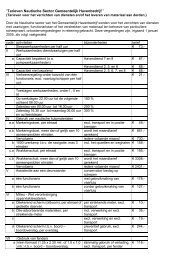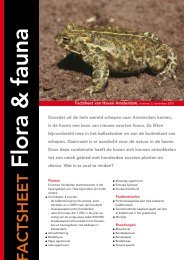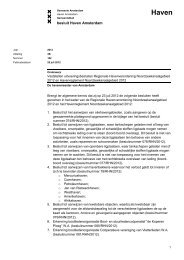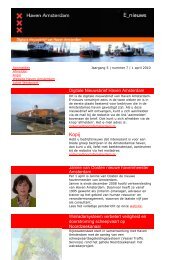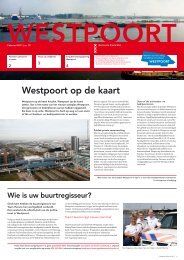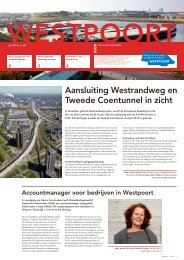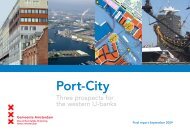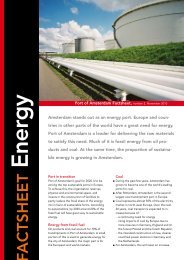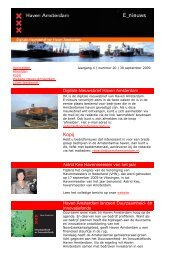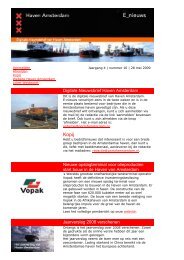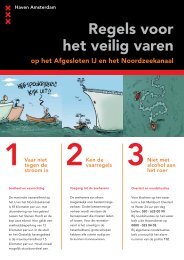You also want an ePaper? Increase the reach of your titles
YUMPU automatically turns print PDFs into web optimized ePapers that Google loves.
ustainable<br />
ort<br />
0<br />
Being a major port also entails great responsibility in the areas of environmental<br />
protection and sustainable entrepreneurship. In addition to intensively using the<br />
available space (see page 24) the Port of Amsterdam also plays a leading role in<br />
sustainable projects and initiatives. For example, the Port of Amsterdam took<br />
the lead in setting up Ecoports – a joint project involving Europe’s nine biggest<br />
ports. These ports exchange and jointly develop practical solutions for environmental<br />
problems. In <strong>2006</strong>, the Port of Amsterdam also began developing an<br />
environmental policy plan, which brings together all projects and initiatives and<br />
will reach completion in 2007. Furthermore, a first move toward the production<br />
of renewable energy could be seen in the form of the Greenmills plant in the<br />
Hornhaven.<br />
Encouraging the use of renewables<br />
By 2020, all EU member states must draw one fifth of their energy<br />
needs from renewable energy sources. The Port of Amsterdam is<br />
making a contribution to this effort.<br />
In <strong>2006</strong>, agreement was reached with Greenmills, which will build a plant<br />
at a 9-hectare site for the production of bio-diesel, bio-gas, bio-ethanol,<br />
compost and renewable electricity from organic waste flows, such as<br />
oils, fats, as well as garden and vegetable waste. The Amerikahaven<br />
will be home to the Netherlands’ first bio-ethanol plant. In <strong>2006</strong>,<br />
Harvest Energy decided to build a facility on a 17.5-hectare site for<br />
the production of renewable gasoline (petrol) from agricultural<br />
products.<br />
In the Port of Amsterdam, the country’s second-biggest wind farm is<br />
being constructed. In the first phase at the end of December <strong>2006</strong>, five<br />
new wind turbines were installed. The existing smaller wind turbines<br />
were moved to other parts of the port. The five new ones produce<br />
the first 37 megawatts of a total planned capacity of 64 megawatts<br />
to be realized in 2007. That is enough green electricity for 40,000<br />
households.<br />
In the past, the Port of Amsterdam brought together companies with<br />
a surplus of energy and nearby firms requiring energy. A very obvious<br />
example of this is the Amsterdam Waste and Energy Company (AEB),<br />
which combines waste disposal with energy production. At the end<br />
of <strong>2006</strong>, the City of Amsterdam and the AEB entered into a contract<br />
for the supply of waste-generated electricity for all street lighting, trams,<br />
subway trains and city-run offices in Amsterdam as of the beginning<br />
of 2007



